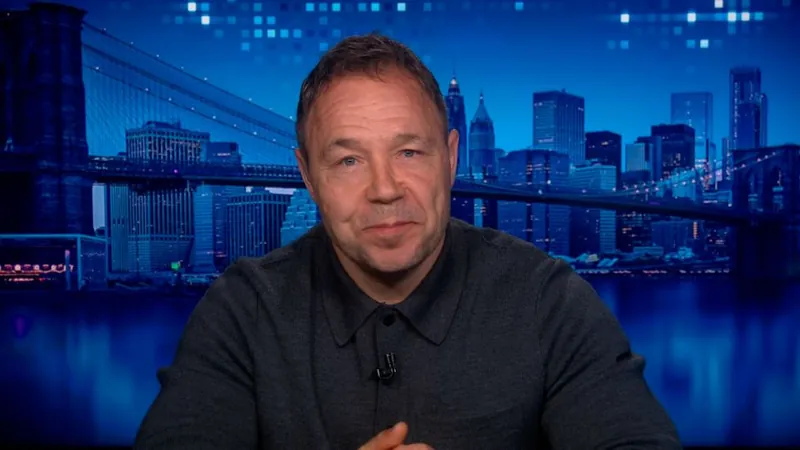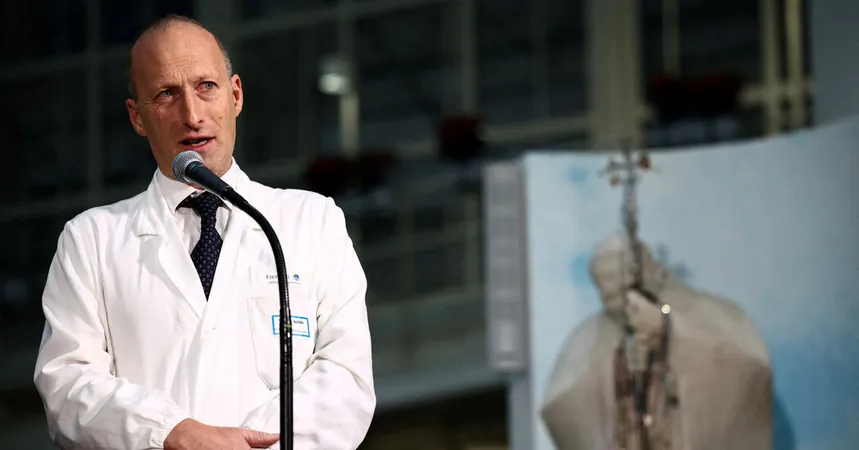
Teenage Boys Are in Crisis: Insights from the Creators of Netflix’s ‘Adolescence’
2025-03-22
Author: Ling
Introduction
In a world increasingly shaped by technology and evolving social norms, the challenges facing today’s youth—particularly teenage boys—are more complex than ever. The new Netflix miniseries "Adolescence" spotlights these issues with a gripping narrative that resonates with contemporary audiences.
The Premise of 'Adolescence' and its Themes
In a pivotal second episode, viewers are introduced to Detective Inspector Luke Bascombe (Ashley Walters), who investigates the shocking crime involving 13-year-old Jamie Miller (Owen Cooper), the protagonist of the series. As the detectives dissect Jamie's relationships, what initially seems to be a benign exchange on social media reveals itself to be something much darker. An emoji-laden comment from classmate Katie suggested complicity with incel culture—a subculture rife with resentment towards women. Bascombe's lack of understanding symbolizes the broader generational divide in recognizing the influences that permeate boys' lives today.
"Adolescence" is not merely a crime drama; it delves deep into topics such as masculinity, online harassment, and the unsettling rise of misogyny among young men. What starts as a murder mystery unfolds into an exploration of what compels boys to commit such brutal acts, intertwining elements of modern social structures and the psychological complexities of growing up in today's hyper-connected world.
Creators' Insights and Motivations
In a recent interview, co-creator Jack Thorne reflected on the urgent need for adults to engage with these pressing issues. He shared that the inspiration for the series was a conversation with co-creator Stephen Graham who urged him to explore the troubling dynamics of male aggression and the phenomenon of knife crime rampant in the UK. They aimed to construct a nuanced portrayal of masculinity that acknowledges both the struggles boys face and the unique conditions of today's society.
Thorne has been candid about the allure of incel ideologies on impressionable teenagers, stating, “These ideas can be seductive. They provide a misguided sense of understanding to feelings of isolation and inadequacy.” The series does not shy away from depicting these harsh realities, inviting viewers to confront the societal dynamics that foster young male anger and alienation.
Exploring Jamie's Environment
Throughout the four episodes, the creators dissect Jamie's environment: his school, his family, and his digital interactions, unraveling a complex tapestry of influences that led him down a destructive path. “It takes a village to raise a child,” Thorne notes, emphasizing that it also can take a village to destruct one. He points to systemic failures, parental disengagement, and toxic peer relationships that contribute to these dire outcomes.
Parental Perspectives and Community Responsibility
As a parent of a young boy himself, Thorne expresses growing concern about the pressures of modern childhood, especially regarding smartphone access and online socialization. He emphasizes the importance of creating supportive communities among parents to safeguard their children against harmful online content and ensure healthy developmental environments.
The Impact of the Show
When discussing the show's impact, Thorne highlights how it has sparked critical conversations between parents and their children—a necessary dialogue about vulnerability and emotional health. "Listening to children is crucial; they are indeed the most vulnerable right now," he asserts. He advocates for adults—parents, educators, and policymakers alike—to actively engage with youth, fostering an environment where young people feel heard and understood.
Unique Storytelling Techniques
With its unique storytelling methods, including filming episodes in one continuous shot, "Adolescence" breaks conventional narrative molds. This stylistic choice forces the audience to confront the reality of Jamie's world without disruption, offering a raw glimpse into his tumultuous life.
Concluding Thoughts
As society grapples with the radicalization of young men, Thorne’s poignant message resounds: we must prioritize the voices of the youth and work collectively to create a safer and more supportive environment. The profound need for connection and understanding has never been more critical, and "Adolescence" serves as both a reflection of and a guide to navigating these turbulent waters.
In conclusion, "Adolescence" is more than a gripping tale; it is a clarion call for adults to pay close attention to the struggles of teenage boys, addressing youth mental health, and challenging the cultural narratives that harm rather than heal. The time for action is now—before it’s too late.




 Brasil (PT)
Brasil (PT)
 Canada (EN)
Canada (EN)
 Chile (ES)
Chile (ES)
 Česko (CS)
Česko (CS)
 대한민국 (KO)
대한민국 (KO)
 España (ES)
España (ES)
 France (FR)
France (FR)
 Hong Kong (EN)
Hong Kong (EN)
 Italia (IT)
Italia (IT)
 日本 (JA)
日本 (JA)
 Magyarország (HU)
Magyarország (HU)
 Norge (NO)
Norge (NO)
 Polska (PL)
Polska (PL)
 Schweiz (DE)
Schweiz (DE)
 Singapore (EN)
Singapore (EN)
 Sverige (SV)
Sverige (SV)
 Suomi (FI)
Suomi (FI)
 Türkiye (TR)
Türkiye (TR)
 الإمارات العربية المتحدة (AR)
الإمارات العربية المتحدة (AR)